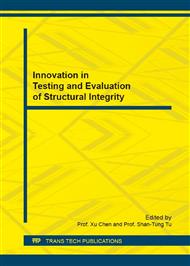p.399
p.405
p.410
p.419
p.425
p.431
p.436
p.441
p.449
The Influence of Processing Parameters on the Surface Integrity of Ni60A Coatings Fabricated by Laser-High Frequency Induction Hybrid Cladding
Abstract:
The surface of much equipment that employed in petrochemical industry is always damaged by corrosion. As a novel technology, laser-high frequency induction hybrid cladding is an effective surface modification technology. Processing parameters, such as laser power, laser scanning speed and induction heating temperature, play an important part in the structural integrity of the coatings. The effects of these processing parameters to cladding integrity were investigated in this paper. Nickel base alloy (Ni60A) claddings were fabricated on the surface of low alloy steel by the way of laser-high frequency induction hybrid cladding and coaxial powder feeding. Macroscopic appearance and porosity of the claddings were systematically investigated by optical microscopy. The corrosion resistance of specimens manufactured by the optimum processing parameters is evaluated in 3.5% NaCl solution by electrochemical test. As the change of processing parameters, the width, height and porosity of laser claddings had an obvious change. Optimum processing parameters was determined because of the overall performance of the claddings. A good metallurgical bonding between Ni60A claddings and substrate was shown by microstructure. The results of the polarization curves turned out that the corrosion resistance of the Ni60A cladding is apparently better than the matrix.
Info:
Periodical:
Pages:
425-430
Citation:
Online since:
September 2016
Authors:
Price:
Сopyright:
© 2017 Trans Tech Publications Ltd. All Rights Reserved
Share:
Citation:


